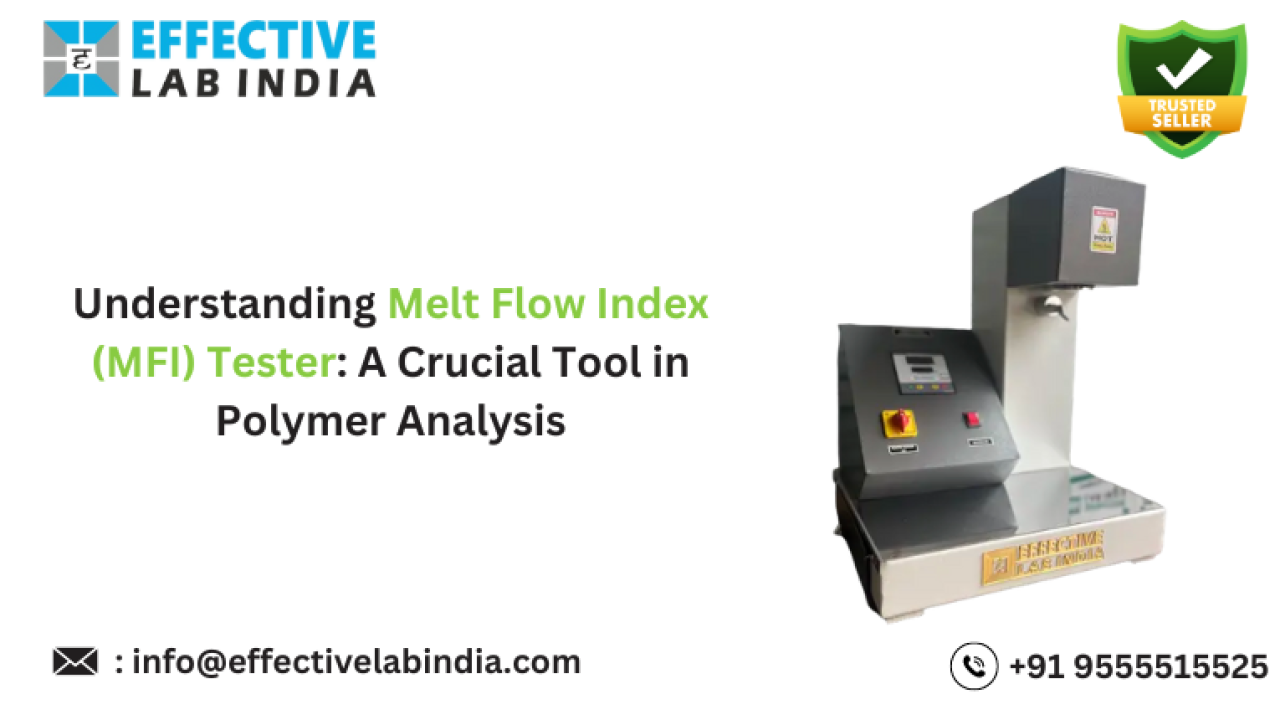Understanding Melt Flow Index (MFI) Tester: A Crucial Tool in Polymer Analysis
Posted on 11 May, 2024 by Effective Lab India

Introduction: In the world of polymer manufacturing, quality control is paramount. Ensuring that polymers meet specific standards and possess desired characteristics requires precise testing methodologies. Among these, the Melt Flow Index Tester (MFI) stands out as a crucial tool. This article delves into the intricacies of MFI testing, its significance, and its role in polymer analysis.
What is Melt Flow Index Testing?
Melt Flow Index testing is a technique used to measure the flow properties of molten polymers under specific conditions. The test involves heating a polymer sample to its melting point and then applying a constant pressure to extrude it through a standardized orifice. The rate at which the molten polymer flows through the orifice is measured, providing valuable insights into its viscosity and melt behavior.
Significance of MFI Testing:
MFI testing serves several important purposes in polymer analysis and quality control:
- Process Optimization: By assessing the flow characteristics of polymers, manufacturers can optimize processing conditions such as temperature, pressure, and extrusion rates to achieve desired product properties.
- Quality Assurance: MFI values provide an indication of polymer consistency and uniformity, allowing manufacturers to maintain quality standards and meet regulatory requirements.
- Material Selection: MFI data helps in selecting the right polymer grades for specific applications. Different MFI values correspond to varying flow rates and processing behaviors, enabling engineers to choose materials that best suit their needs.
- Troubleshooting: In cases of processing issues or product defects, MFI testing can help identify underlying issues such as inadequate melt flow, polymer degradation, or contamination.
How MFI Testing Works:
The MFI tester consists of a heated barrel, a piston with a standardized weight, and a die with a specified orifice diameter. The polymer sample, usually in the form of pellets or powder, is loaded into the barrel and heated to the desired temperature. Once molten, the piston applies a constant load to the polymer, forcing it to extrude through the die. The extrusion rate is measured in grams per unit of time, typically in grams per 10 minutes (g/10 min), yielding the MFI value.
Interpreting MFI Results:
MFI values vary depending on factors such as polymer type, molecular weight, temperature, and pressure. Higher MFI values indicate lower viscosity and faster flow rates, whereas lower values suggest higher viscosity and slower flow rates. Understanding these variations is essential for interpreting MFI results accurately.
Conclusion:
The Melt Flow Index (MFI) tester plays a vital role in the polymer industry, providing valuable insights into the flow properties of molten polymers. By enabling precise measurement of melt flow rates, MFI testing facilitates process optimization, quality assurance, material selection, and troubleshooting. As polymer applications continue to diversify and evolve, the importance of MFI testing in ensuring product quality and performance remains unwavering.